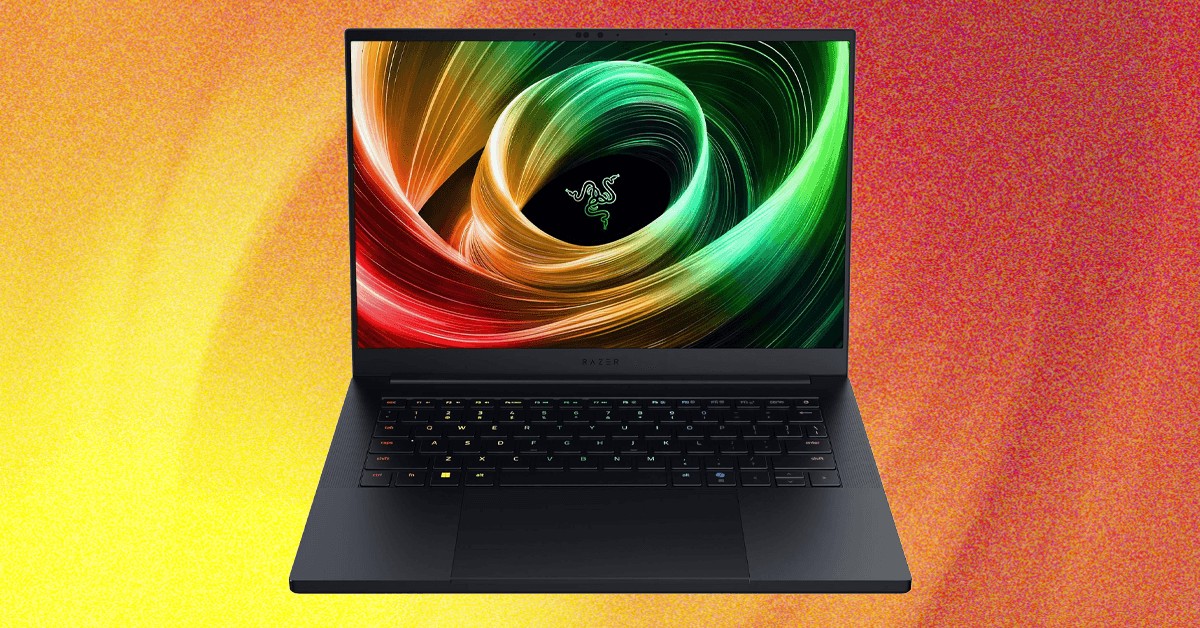The Razer Blade 14 has been a significant player in the gaming laptop market for years, setting a new standard for compact and powerful machines. While competition has increased, Razer has continuously refined its design, making it a worthwhile contender for those seeking a blend of performance and portability. This review examines the latest iteration, highlighting its strengths, weaknesses, and how it stacks up against the competition.
Key Upgrades and Design
The latest Razer Blade 14 boasts a number of enhancements, including a vibrant OLED display, a slightly thinner chassis, improved speakers, and the latest hardware. While the overall design hasn’s changed dramatically, the reduction in thickness from 0.70 to 0.62 inches offers a subtle visual improvement. Notably, the thicker bottom section—referred to as a “thermal hood”—accommodates internal components and necessitates taller rubber feet.
Currently priced at a suggested retail value of $1,800, the Razer Blade 14 is available with an RTX 5060 graphics card, 16 GB of RAM, and a 1 TB storage drive. Direct competitors include the Asus ROG Zephyrus G14, HP Omen Transcend 14, and Asus TUF Gaming A14. While the Zephyrus G14 offers a more affordable base model, the Blade 14 often goes on sale, making it a competitive option.
The laptop features a solid array of ports, including two USB-A 3.2 Gen 2 ports, two USB 4 Type-C ports with Power Delivery and DisplayPort 2.1 support, an HDMI 2.1 output, a microSD card reader, and a headphone jack. Although it lacks Thunderbolt 5—found in the larger Blade 16—it can still support dual external 4K monitors at 144 Hz via the USB-C and HDMI ports.
The OLED Display: A Significant Enhancement
A standout feature of the latest Razer Blade 14 is the introduction of an OLED display. This upgrade is a welcome change from the previous generation’s mini-LED panel. The OLED screen offers a resolution of 2880 x 1800, resulting in a pixel density of 242 pixels per inch—a sharpness comparable to the 14-inch MacBook Pro.
While OLED is known for delivering impressive HDR performance through its ability to turn off individual pixels, the Razer Blade 14’s display only reaches 620 nits in HDR and 377 nits in SDR, falling short of the performance offered by other OLED laptops, like the Lenovo Legion 7i Gen 10. This limitation impacts the perceived HDR effect. Still, OLED offers benefits like faster response times, reduced motion blur, and higher contrast, which enhance the overall gaming experience.
The display’s color accuracy (1.3) and AdobeRGB color space coverage (86 percent) are not as strong as the Razer Blade 16. Similarly, the 120 Hz refresh rate is standard for OLED laptops, while some competitors—such as the Alienware 16X Aurora—offer 240 Hz speeds.
Performance and Competition
The Razer Blade 14’s primary competition remains the Asus ROG Zephyrus G14, which is often more affordable. The most significant difference between the two laptops is the processor: the Blade 14 utilizes a more powerful AMD Ryzen AI 9 365, providing better performance in CPU-intensive tasks like gaming and creative applications. This chip also offers improved power efficiency, leading to slightly better battery life—around 10 hours and 19 minutes in a local video playback test.
Key Specifications & Gaming Performance
The latest Razer Blade 14 comes standard with 1 TB of storage and 32 GB of RAM—though 16GB and 64GB options are available. The graphics card choices are RTX 5060 and RTX 5070. Configuration is tied to the graphics card choice, meaning you can’t pair the RTX 5070 with 16 GB of RAM.
Game Performance (Testing at various resolutions)
| Game | 2880 x 1800 | 2560 x 1600 | 1920 x 1200 |
|—|—|—|—|
| Cyberpunk 2077 | 45 fps | 59 fps | 95 fps |
| Black Myth: Wukong | 24 fps | 28 fps | 37 fps |
| Marvel Rivals | 30 fps | 38 fps | 62 fps |
| Monster Hunter Wilds | N/A | 45 fps | 61 fps |
While the gaming performance results may not be groundbreaking on paper, particularly for the RTX 5070, using lower graphics presets and Nvidia’s DLSS technology can significantly improve frame rates without sacrificing image quality.
The RTX 5070 in the Razer Blade 14 delivers roughly 14 percent faster performance than the RTX 5060 in the Lenovo Legion 7i Gen 10. However, to benefit from the additional VRAM offered by an RTX 5070 Ti, users will need to consider larger models like the Razer Blade 16 or higher-powered ROG Zephyrus G14 variants.
Conclusion
The Razer Blade 14 remains a compelling choice for those seeking a powerful and compact gaming laptop. While the latest iteration doesn’t introduce revolutionary changes, it continues to refine the formula with a stunning OLED display, a slightly slimmer design, and a top-tier processor. Despite some limitations in the display’s brightness and color accuracy, and the increase in price, the Razer Blade 14 remains one of the best compact gaming laptops available.
